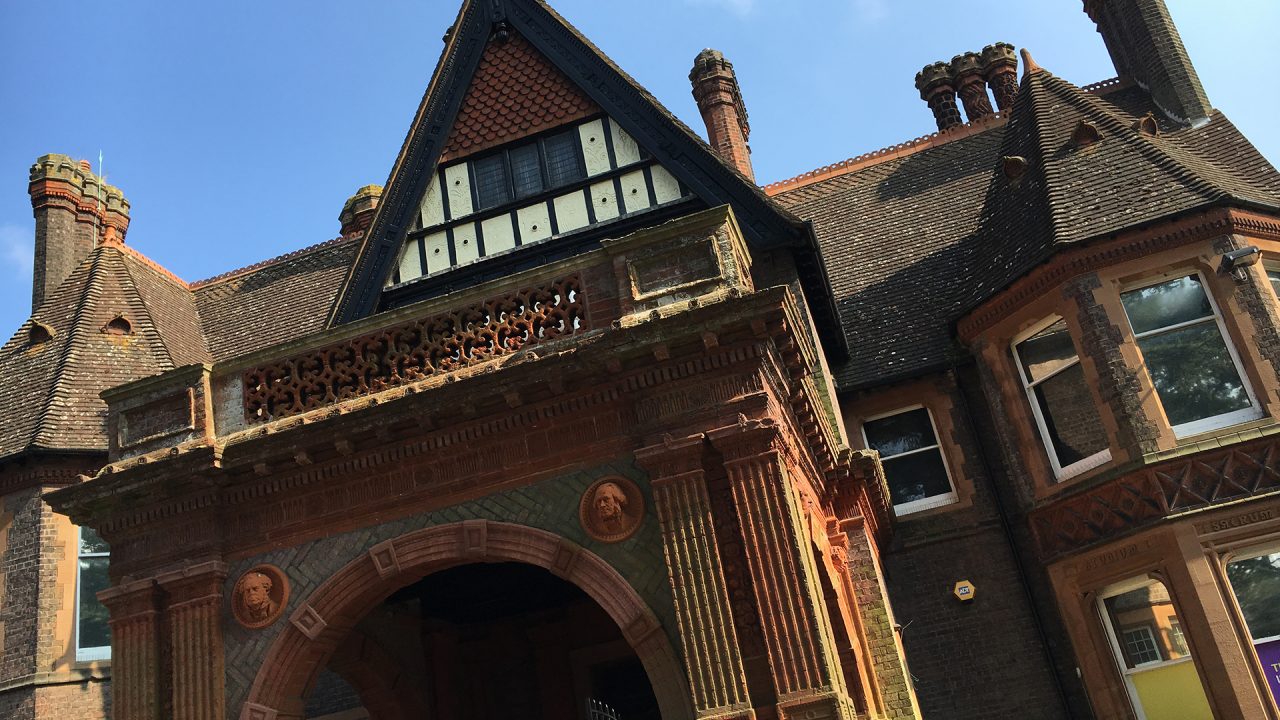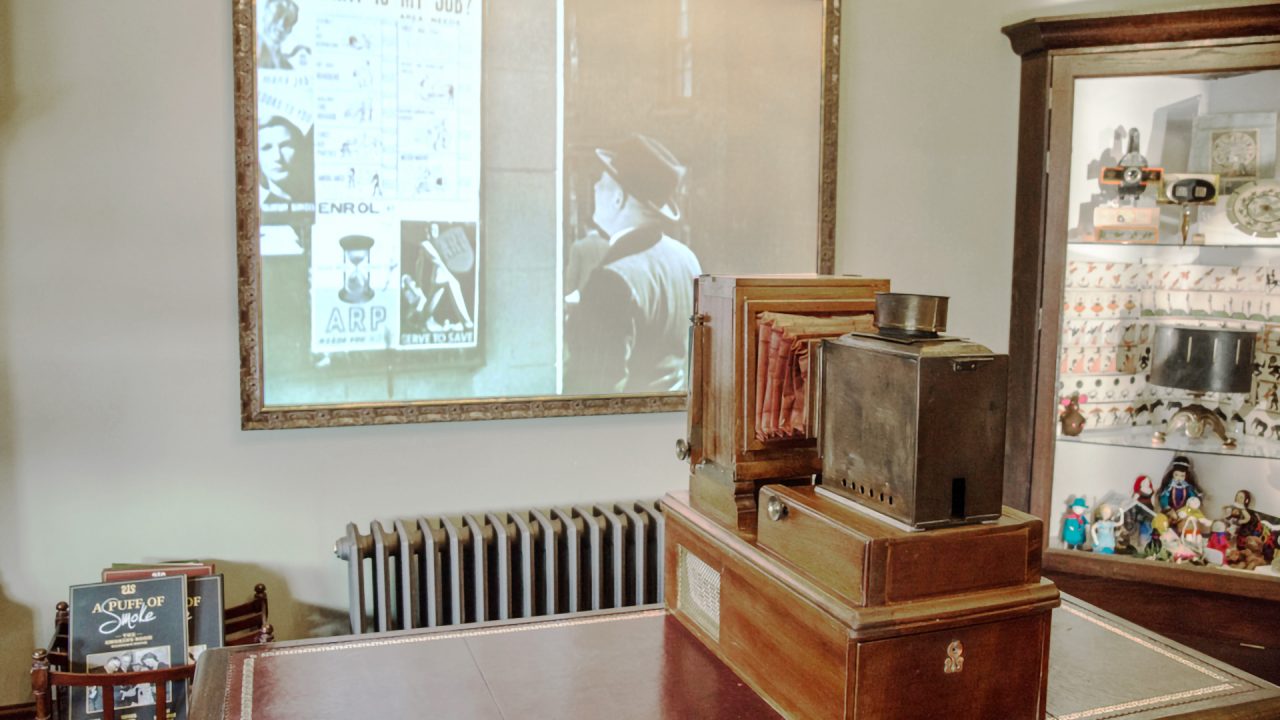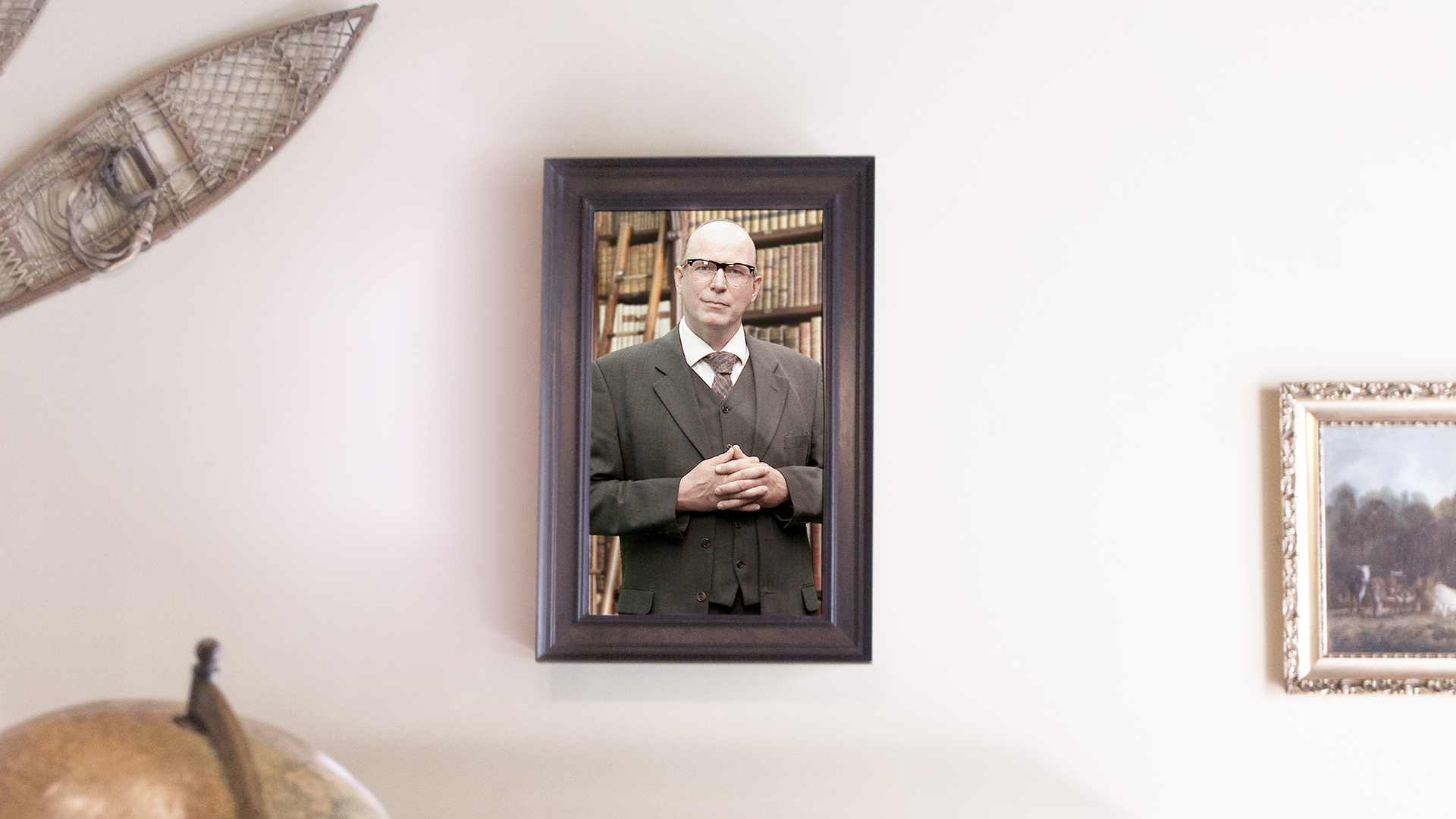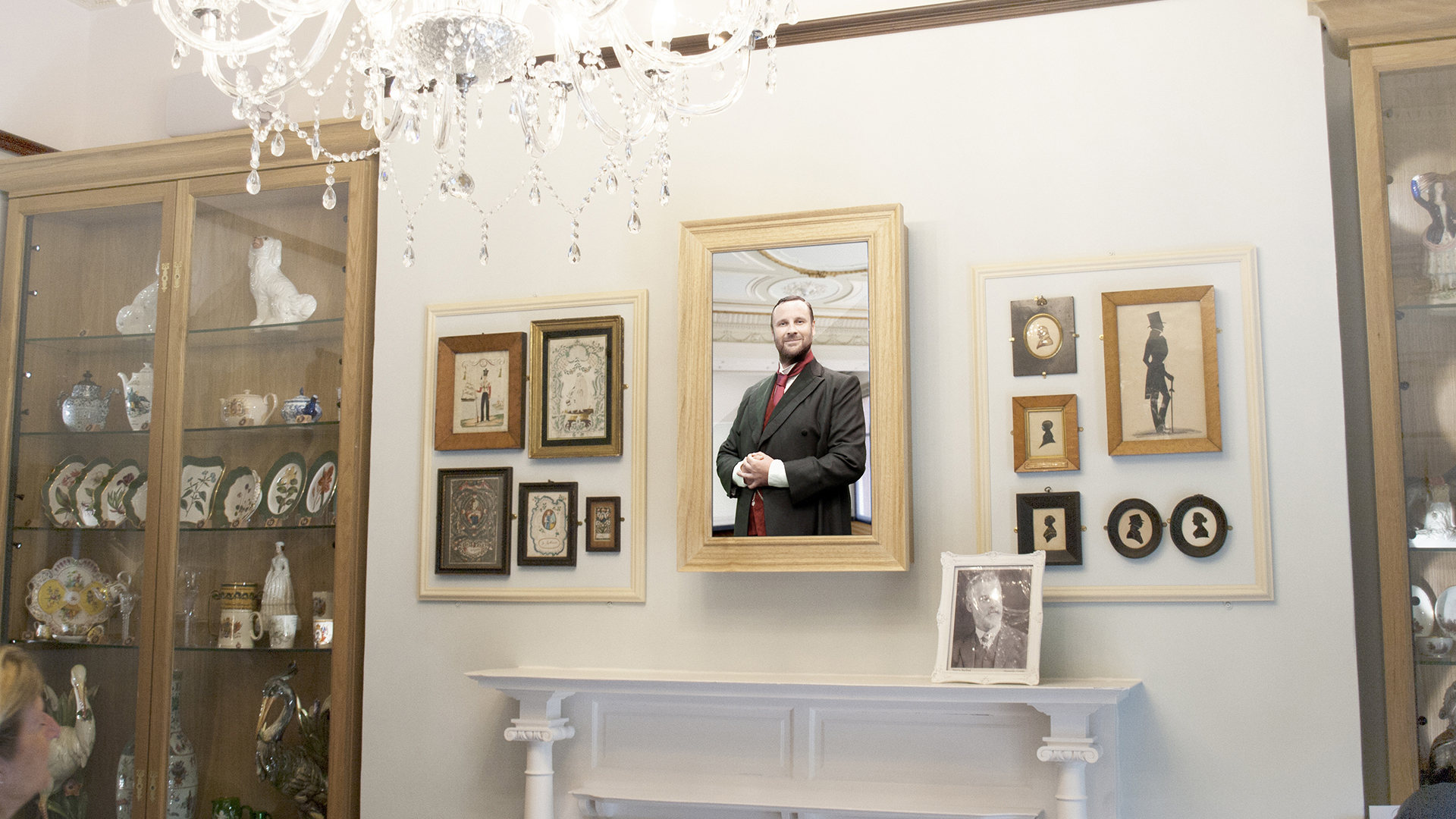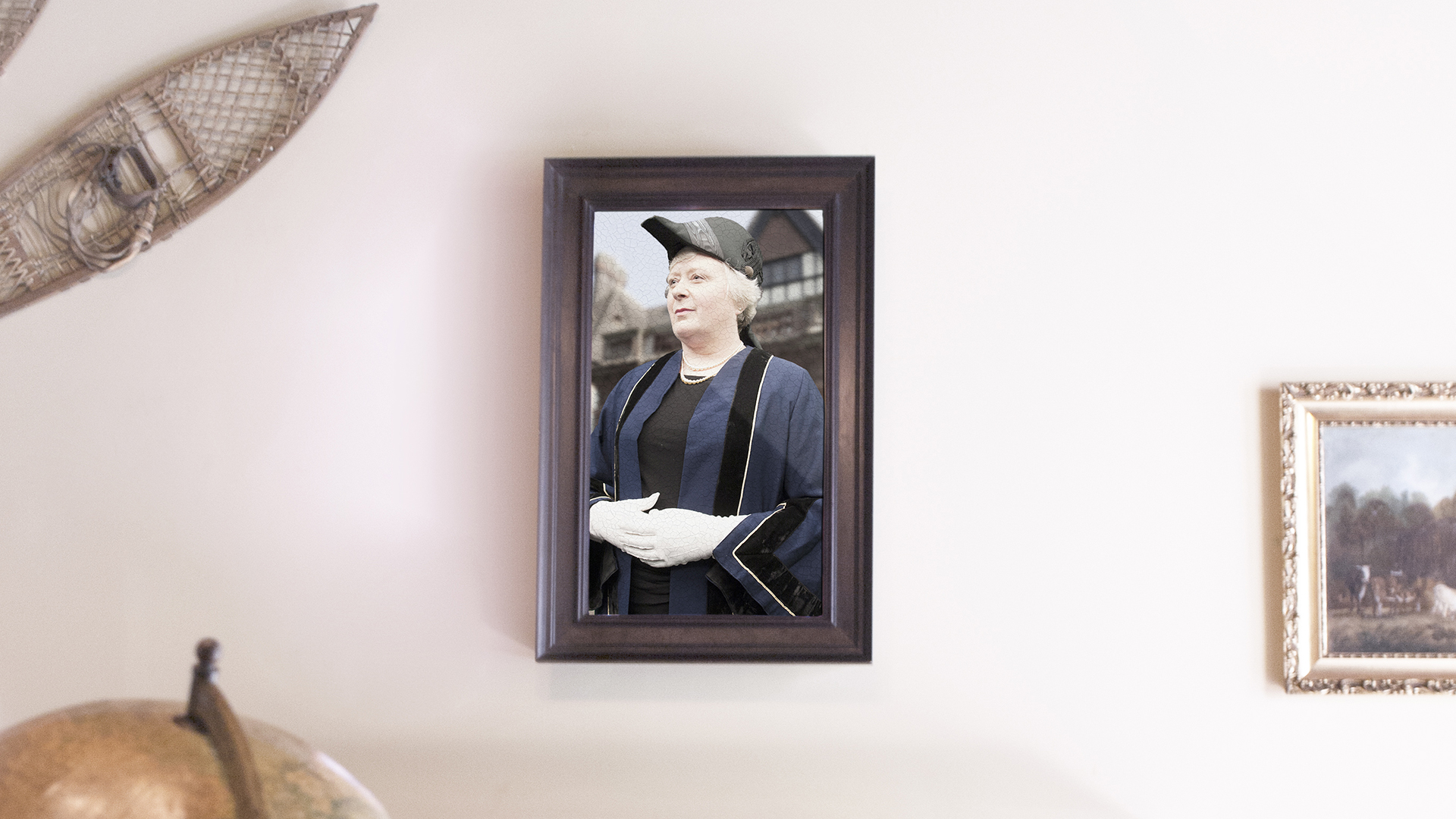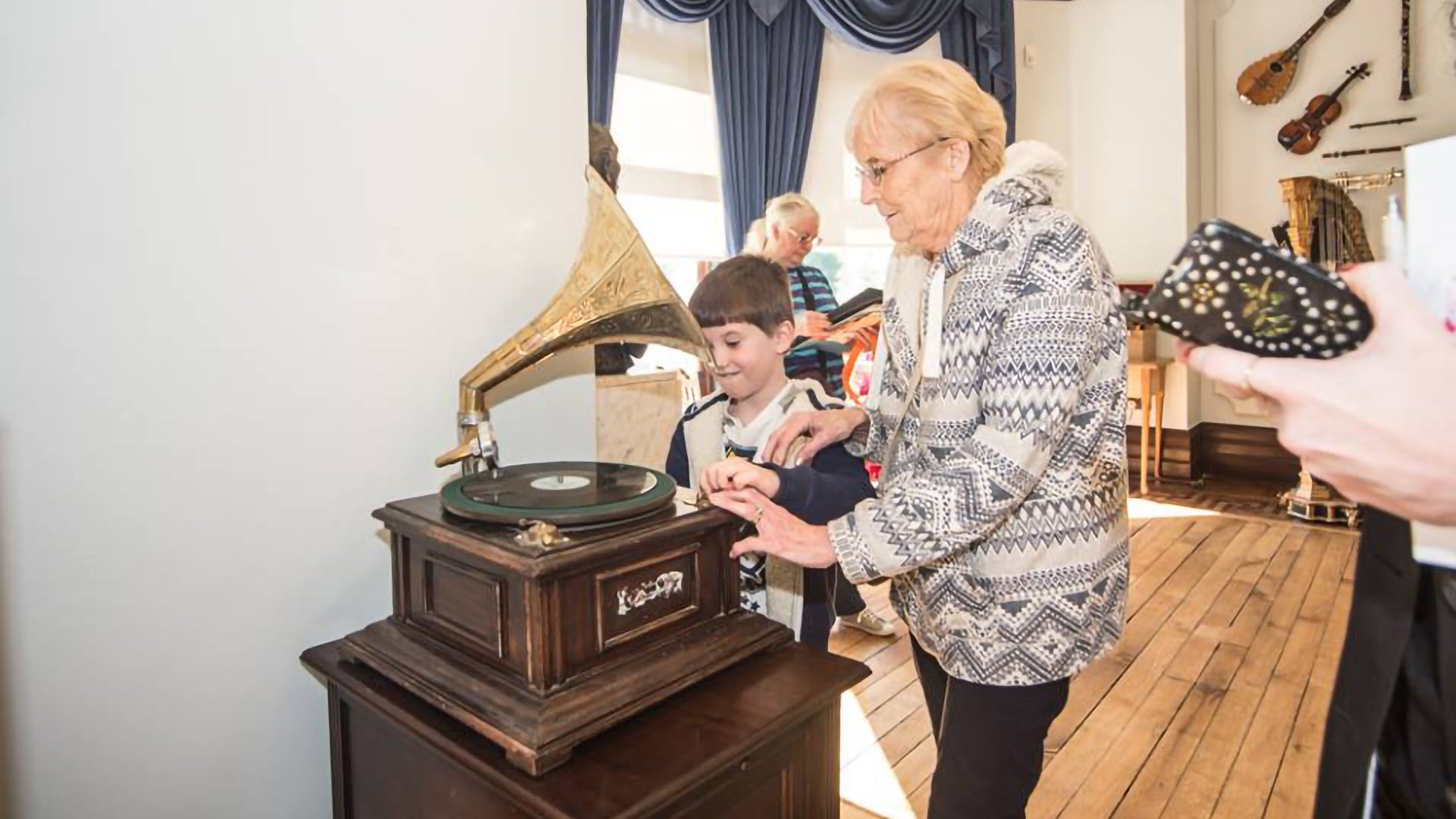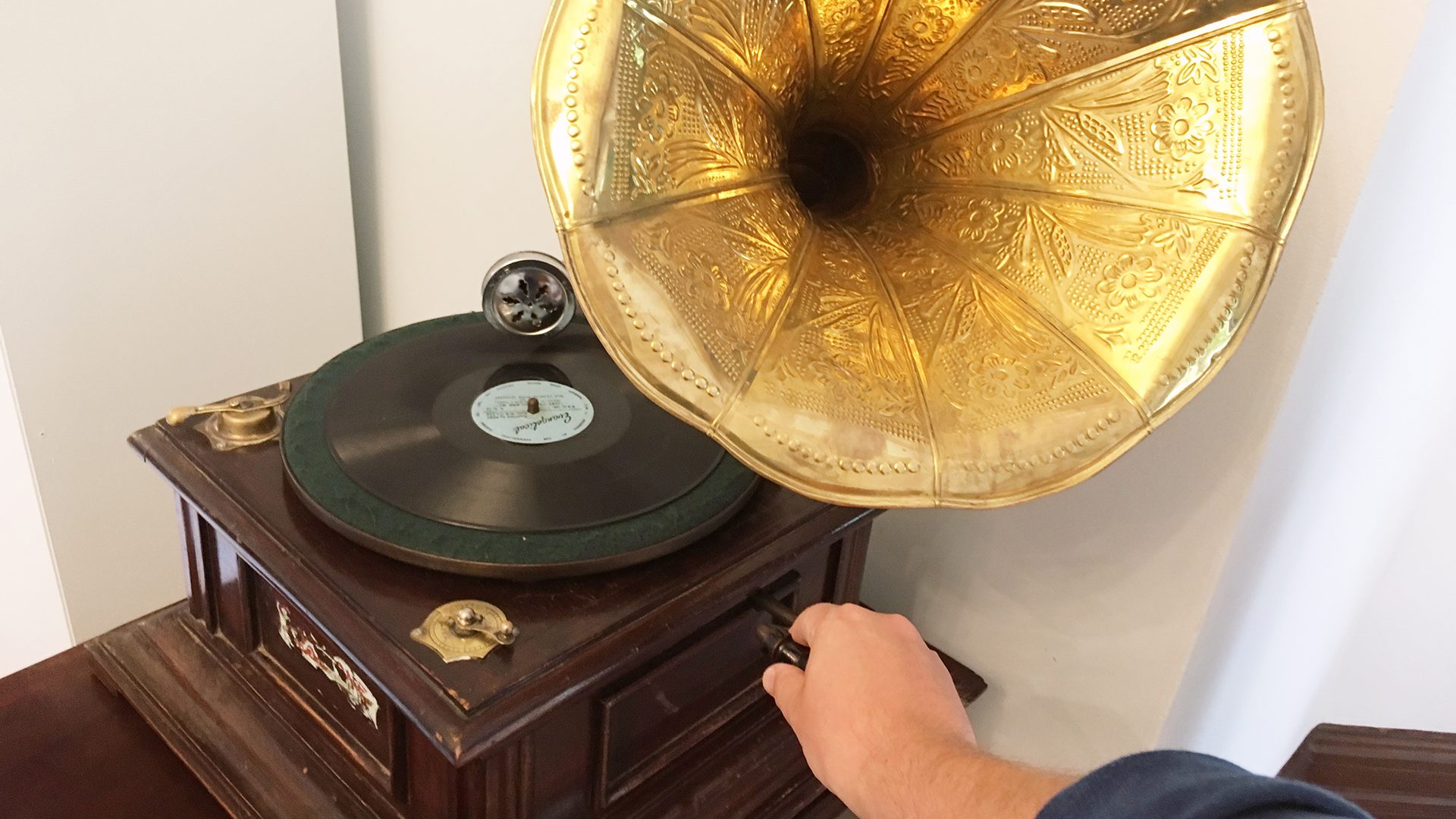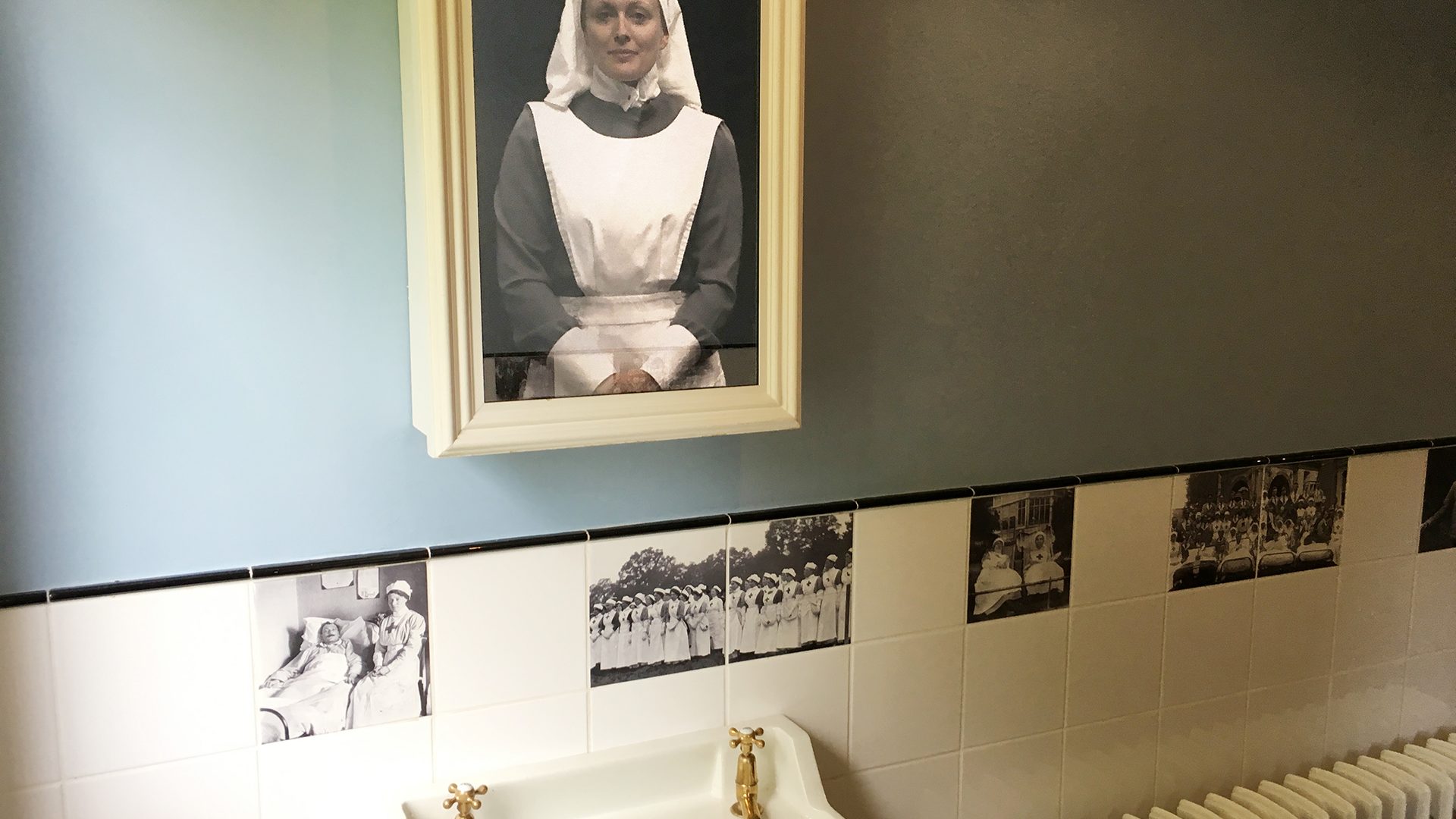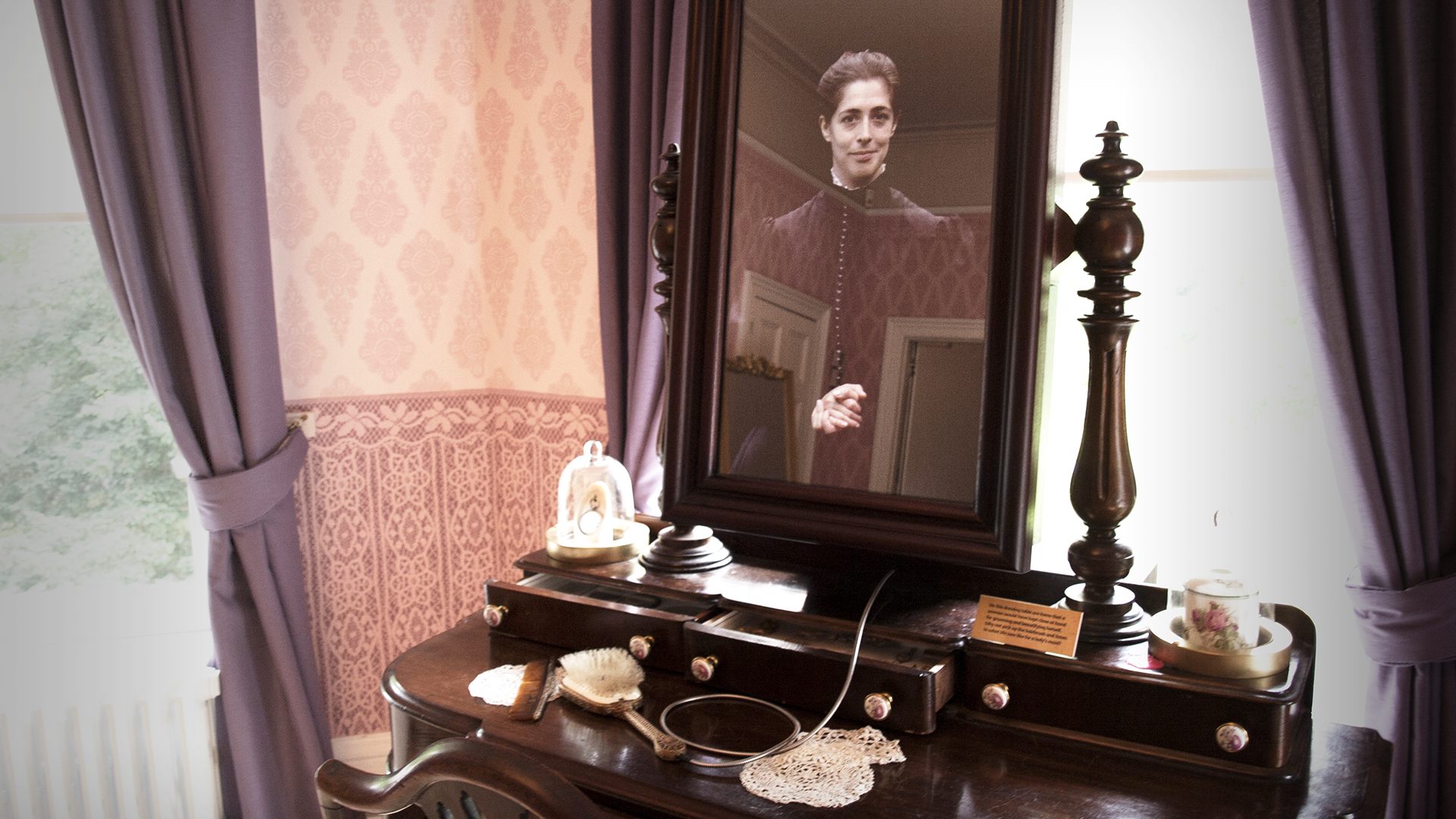A soundscape, triggered by a sensor, greets visitors at the porte cochere – the coaching gate – setting the scene for their historical exploration. A female visitor arrives and is greeted by Frank Scargill, owner of the house, “Welcome, friend, to our spacious house,” he enthuses. Frank and his family will address visitors again throughout their tour of the house.
The hardware we have specified and installed is external grade to stand up to the effects of the weather and is unobtrusive so that it does not distract from the striking Victorian architecture or the ambient experience of the greeting.
The hardware we have specified and installed is external grade to stand up to the effects of the weather and is unobtrusive so that it does not distract from the striking Victorian architecture or the ambient experience of the greeting.
